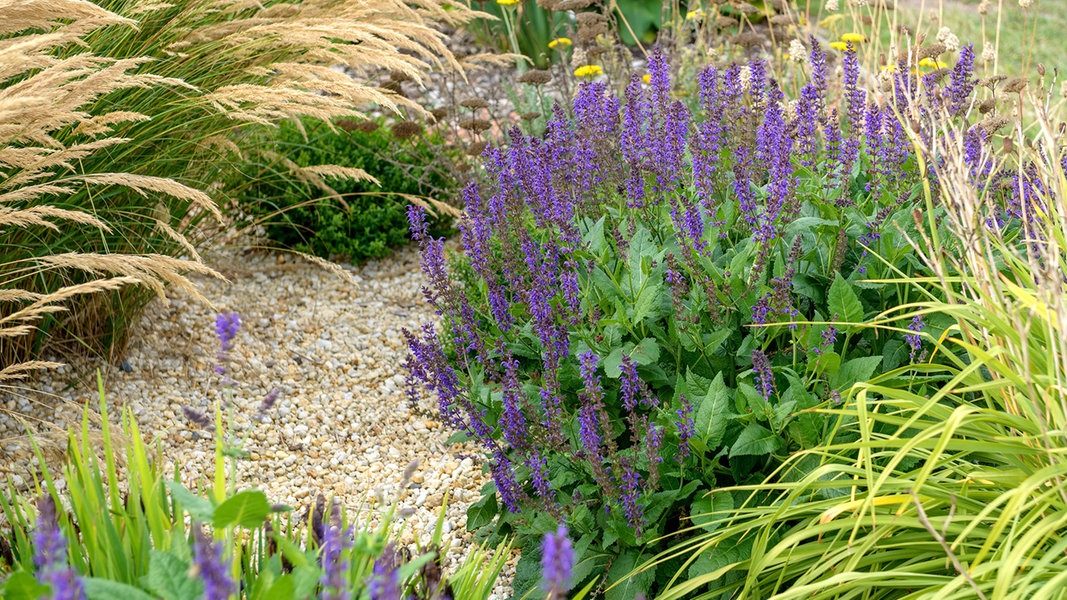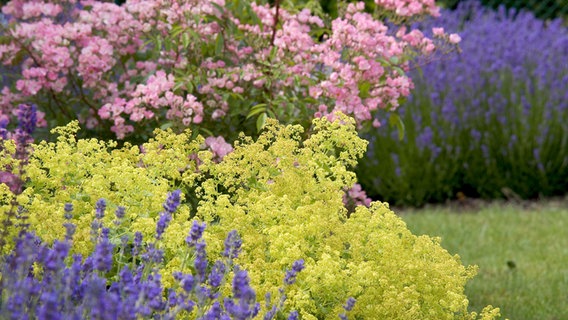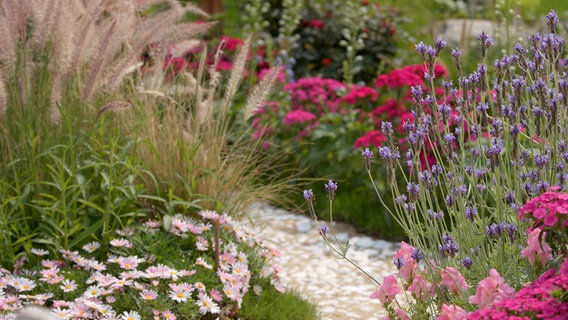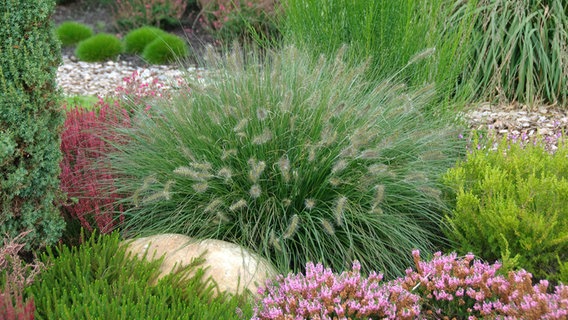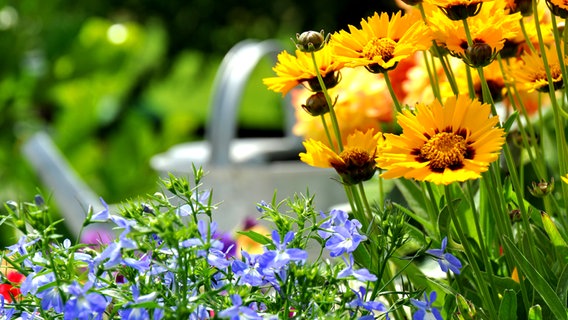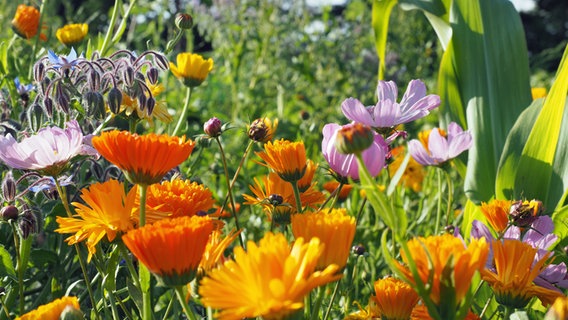Status: 07.06.2023 12:34 p.m
Delicate grasses and bright flowering shrubs: A prairie garden is an eye-catcher and very easy to care for. The plants hardly need any water when it is hot and dry. What is important when investing?
Many plants have suffered greatly in recent summers with high temperatures and little rain. The beds had to be watered very often – a considerable effort coupled with high water consumption. Prairie gardens, on the other hand, are much easier to care for and use fewer resources. Of course, the plants also need water, but they are much less demanding.
Planning a prairie garden
Naturally, the North American prairie is about 90 percent composed of grasses, the rest are mainly flowering perennials. Which mixing ratio is planted in the home garden depends on personal taste and the desired overall impression: Should the colorful splendor of the flowers be emphasized? Or the lightness and space conveyed by ornamental grasses? The size of the planted area is also important: Small accents can be set with a group planting in part of a bed, from about 100 square meters a prairie-like overall impression is created.
It is advisable to cleverly combine lower or higher-growing plants with one another. A planting plan prepared in advance helps with the redesign of the garden.
Ideal location and garden soil
A prairie garden can easily be adapted to the conditions in our latitudes. The plants need a sunny location, at least four hours of direct sunlight are necessary for them to thrive. The Garden soil should be as deep as possible and be able to store water and nutrients well. A rather sandy soil should be enriched with bentonite, humus and compost to be enriched. Waterlogging can form in loamy soils, so they should be improved with compost and sand. It is best to work the soil conditioner up to 60 centimeters deep into the soil.
Create prairie garden in spring
Coneflowers (Rudbeckia) are ideal for a prairie garden.
Spring is the best time to start a prairie garden. Many garden centers and perennial nurseries offer a wide range of plants. When buying, make sure that the ornamental grasses in particular are hardy and perennial. Depending on how fast the plants you choose grow, the prairie garden can be fully grown in as little as two years. Perennials and grasses then form a dense plant cover and hardly any weeds have to be plucked.
Suitable plants: perennials and grasses for the prairie garden
There are numerous plants that make a beautiful addition to a prairie garden. Many of them impress with their bright and intense colors. Some examples:
flowering perennials:
- sun bride
- coneflower
- girl eye
- Perennial Sunflowers
- Astern
- Purpursonnenhut
- Splendor chart
- speedwell
- Goldrute
- Blauraute
- Indian nettle
- Beautiful candle
- Bronze loosestrife
- Canadian trefoil
- compass plant
- The bearded father
- Phlox
- Fat Her
- yarrow
- Kokardenblume
- Steppensalbei
- globe thistle
- Rote Spornblume
Suitable grasses:
- Indianergras
- Don’t worry
- buffalo grass
- Moskitogras
- Vanillegras
- drop grass
- Fountain grass
- Heron Feather Grass
- Riesenfedergras
Tending and watering the prairie garden
Of course, even plants in the prairie garden cannot do without water. The right time to water has come when they already look limp in the morning. Then the bed should be watered extensively. Better once vigorously than water a little often. Otherwise, the prairie garden does little work. The plants only have to be cut back in late winter, around February.
Many of the perennials flower from late summer into autumn, making them an ideal food source for Bees, bumblebees and other insects that often don’t find enough food late in the year.
Further information

